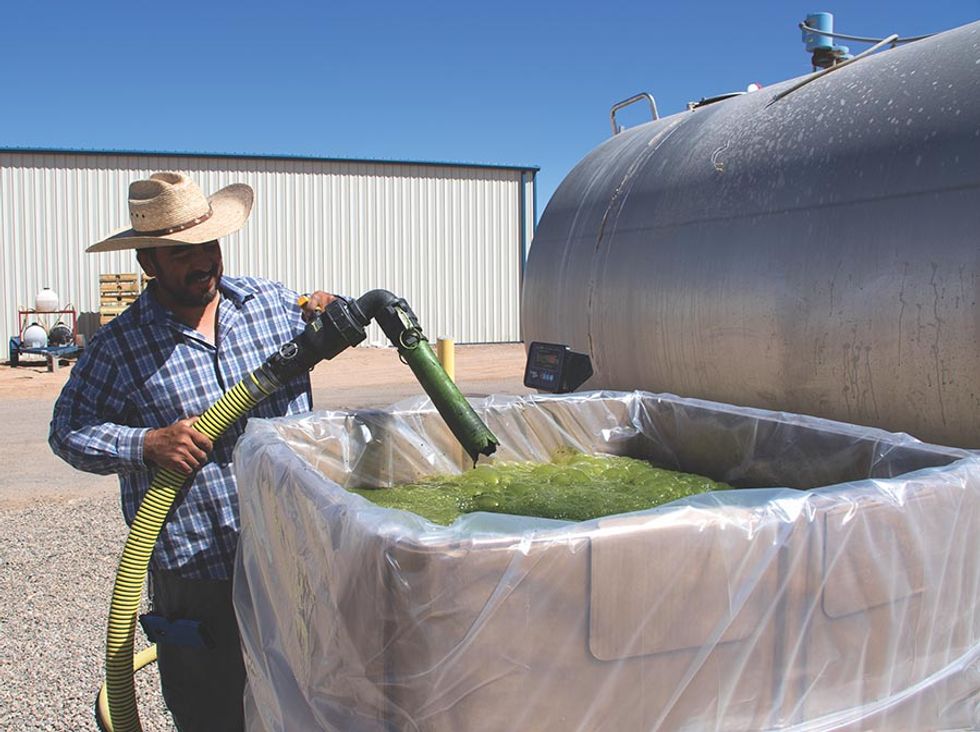New Tech Could Turn Algae Into the Climate’s Slimy Savior
Low-power ways to grow algae could lock in carbon dioxide and feed the world
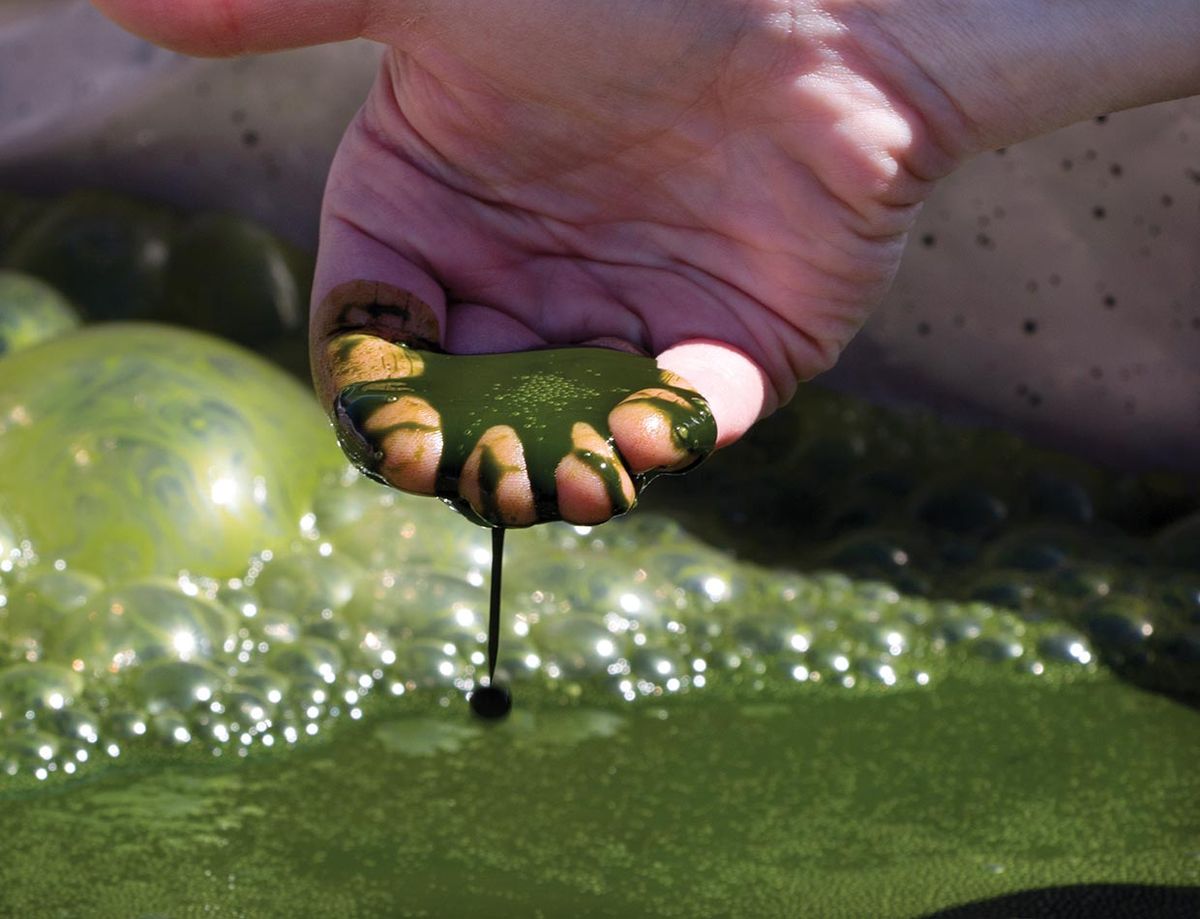
“Those are the kinds of bubbles we want to see,” says Rebecca White, pointing to tiny pockets of gas that are barely visible on the surface of an artificial pond in New Mexico. Their small size means the carbon dioxide she and her colleagues have injected into the water has mostly dissolved, instead of just escaping into the air.
We’re less than a kilometer from the U.S.–Mexican border, surrounded by desert grasslands. It’s one of the last places I’d expect to find a thriving population of marine algae. Yet here in this massive pool swirls more than a million liters of Nannochloropsis, a salt-loving alga that flourishes on the brackish water pumped from below.
Until 1973, long before the algae moved in, farmers grew cotton on this land. Then the well water they were using became so salty that they let the fields go fallow and never planted again. Algae’s ability to prosper in places that would kill most other crops, combined with their astounding nutritional profile, has wooed experts worried about the future of the global food supply.
White, who oversees operations at this 97-acre algae farm and a sister site in Imperial, Texas, for Houston-based Qualitas Health, is familiar with the promise and pitfalls of large-scale algae production. A veteran of algae’s biofuels craze, she worked here in 2012 when a different company spent US $104 million building the farm to produce “green crude.” After three years, crude oil prices tanked, undercutting biofuels, and the facility closed.
The new hope for algae is that they could rebalance the global carbon equation as a food, not a fuel. Despite appearances, algae are an excellent source of protein. If meat-eaters started to eat more algae, the industry’s theory goes, that shift could slash carbon emissions by reducing demand for beef and pork.
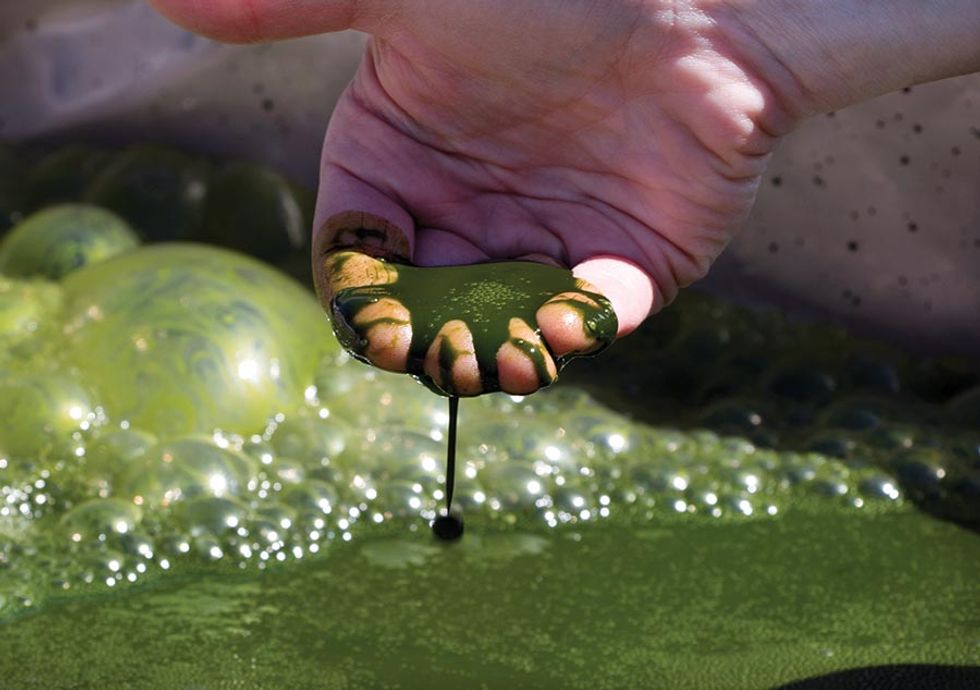
Algae could also replace fertilizer-intensive crops such as corn and soy as fillers in processed foods, including fish, pig, and cow feed. With enough algae in human and animal diets, society could avoid planting new fields even as the population increases, and perhaps even allow existing farmland to return to forests, which absorb more greenhouse gases per square kilometer.
There’s one more big reason to let algae seep into the food supply: Though algae are not technically plants, they need CO 2 to grow. And to grow large amounts very quickly, farmers must inject CO2 directly into the crop. That means every algae farm doubles as a carbon sponge.
New technologies aim to capture emissions from power plants and pipe them into algae ponds, in a twist on carbon sequestration. One variation of this dream even calls for placing an algae farm next to every coal-fired power plant to ingest the CO 2 produced there.
Today, though, algae production is still a boutique industry focused mostly on nutraceuticals and food dyes. Qualitas’s New Mexico farm churns out Nannochloropsis, or “nano,” as White calls it, for omega-3 supplements. With just 48 ponds in production, adding up to about 50 acres, this site nevertheless qualifies as one of the world’s largest microalgae farms.
The algae industry will have to scale up in a big way to deliver the carbon offsets and the protein the world needs. Eventually, producers will also have to persuade food manufacturers that algae deserves to be used in their products—and convince consumers that it belongs on their plates.
But if everything goes according to plan, these microorganisms could reshape the food supply as dramatically as corn and soy have over the past 50 years. And this time, the planet may be better off for it.
Algae represent one of Earth’s oldest life-forms. Algae also constitute some of the world’s simplest organisms. Many species are unicellular and lack advanced structures such as stems, leaves, and petals.
For such tiny organisms, algae already wield an outsize influence on the planet. Consider Prochlorococcus, the smallest and most abundant type of phytoplankton in the ocean, which forms the basis of the marine food chain. “It’s amazing that it does so much with so little,” says Zackary Johnson, a marine biologist at Duke University, in North Carolina.
Now, scientists want to use algae’s superpowers to build a more sustainable food system for land dwellers. Agriculture, forestry, and other land uses (a category defined by [PDF] the Food and Agriculture Organization of the United Nations) emit 21 percent of greenhouse gases globally. There is rising tension between the need to clear more land to produce food for more people and the desire to keep global emissions in check.
In theory, algae could ease that tension while also providing high-quality sustenance. Protein composes up to 70 percent of the dry weight of Spirulina and some species of algae. (Like Prochlorococcus, Spirulina is technically not a type of algae—it’s a genus of cyanobacteria, but “we allow them into the club,” says Stephen Mayfield, director of the California Center for Algae Biotechnology at the University of California, San Diego.)
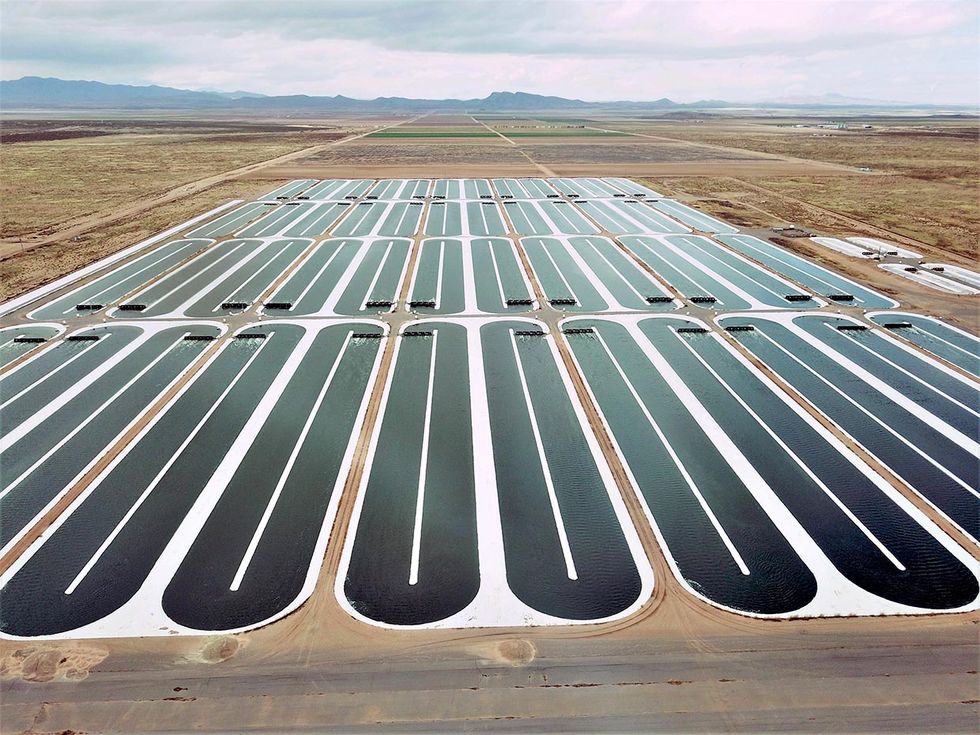
Thanks in part to algae’s high protein content, 1 hectare of algae ponds can generate 27 times as much protein as a hectare of soybeans. And protein from algae is more nutritious than protein from soy, because it contains vitamins and minerals in addition to all the essential amino acids.
Meanwhile, the global demand for protein will more than double by 2050. Setting aside for a moment the question of whether people who wish to eat steak would be willing to take a swig of algae instead, producing the latter could satisfy demand without requiring large tracts of land to be cleared for pastures or crops.
But growing algae has never been an easy affair. Despite algae’s reputation as a fast-proliferating weed, it still takes a lot of electricity and ingenuity to reliably produce large amounts of it. Farms use electricity that’s primarily still generated from fossil fuels to pump water and constantly stir the bubbling mixture. Algae also need some fertilization with nitrogen and phosphorus, the production and application of which generates emissions.
Given all of this, one life-cycle assessment concluded that a protein powder made from algae would be no better than animal protein from a sustainability perspective, and slightly worse than other vegetable-based proteins, such as soy. Another analysis found that while growing algae for food would avoid some future emissions from deforestation, long-term reductions in emissions would be possible only by producing algae-based food and fuels at the same facility.
So for algae to have any measurable impact on emissions, producers must find ways to grow more of it with less. And to sell it at a price palatable to consumers and food companies, they must also lower their own costs. That means finding a cheap supply of CO 2. The gas, which to many industries is nothing more than a problematic by-product, is currently Qualitas’s most expensive nutrient.
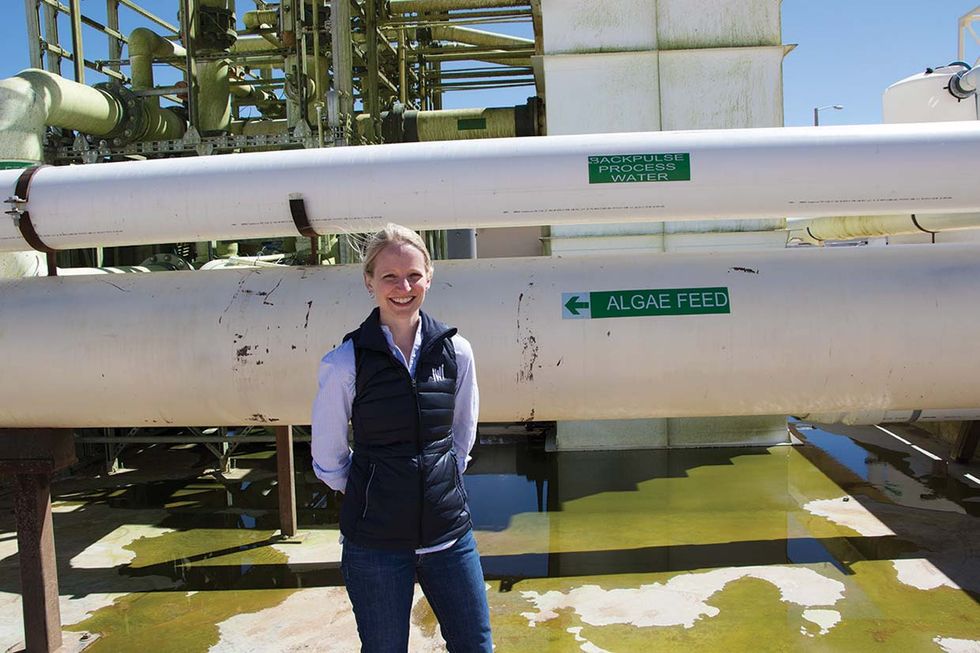
Dave Hazlebeck believes in the power of technology to help the fledgling algae industry reach its full planet-saving potential. His company, Global Algae Innovations, operates a 33-acre algae farm in Kauai, Hawaii, that doubles as a site to demonstrate dozens of technologies that can grow algae faster with fewer emissions and at a lower cost.
The company’s boldest experiment to date is to divert the flue gases of a nearby petroleum-fired power plant into their ponds, as the algae’s primary source of CO 2. It’s a three-step process: After CO2 is captured with an absorber (akin to a scrubber) that dissolves the gas into recycled water, that carbonated water is stored in covered pools. When the company is ready to grow algae, it pumps the carbonated water into an open pond and inoculates it with one of several algae strains.
Using this method, Hazlebeck says the farm could theoretically capture 90 percent of the CO 2 from the plant, which would support up to 1,000 acres of algae. He figures that if the United States stuck an algae farm next to every power plant located in an algae-friendly climate, those farms could sequester 800 million metric tons of CO2, offsetting 198 coal-fired power plants. With that CO2 the farms could produce 400 million metric tons of algae, which is roughly equivalent to how much protein meal the entire world currently makes in a year.
Those figures make a strong case for putting algae everywhere, but White, of Qualitas, isn’t convinced. As soon as I ask her about Hazlebeck’s proposal, she grabs a paper napkin and starts doing her own calculations. To qualify for tax credits for carbon sequestration under a newly proposed bill, a U.S. facility must capture at least 100,000 metric tons of CO2 in a year (a small amount, considering that many coal-fired power plants emit millions of tons of CO2).
To find out how much algae it would take to absorb that much CO 2, White figures that an algae farm produces about 14.5 metric tons of algae per acre per year—considered the industry standard. To produce 1 kilogram of algae, White’s team uses 2.7 kg of CO2. That means a farm with at least 2,300 acres of algae would have to be built next to each power plant. For comparison, the average U.S. farm today is 440 acres.
White is skeptical that farmers could come up with enough land and water to pull this scheme off—even with algae’s advantage of growing on land and in water that’s not suitable for other crops. “It’s not feasible—it’s aspirational,” she says.
A better solution, she believes, would be to capture CO 2 directly from the air, using affordable commercial technology that doesn’t yet exist but which several companies are working on. Power plants could pay to operate direct air-capture systems and give the gas to algae farms as a carbon offset. This would “significantly lower the cost of algae production” by eliminating the need to buy tanks of CO2, White says, and it would create a kind of symbiosis between the two industries.
Raising Algae
On farms such as Qualitas’s, algae grow in large ponds and are harvested all year. This multistep process incorporates techniques from both the biofuels industry and traditional agriculture. For several weeks, algae live in open ponds called raceways. Paddle wheels mix in CO2 and nutrients and prevent the algae from settling.






The algae industry has had a lot of false starts. German scientists and employees of Britain’s Imperial Chemical Industries independently began studying algae’s potential as a food source during World War II. Around the same time, Stanford University researchers produced 45 kg of a popular edible type called Chlorellawhile piloting a concept for an algae production facility.
Needless to say, the idea didn’t catch on. It may have been the taste—one report described Chlorella as having “a vegetable-like flavor, resembling that of raw lima beans or raw pumpkin.” Testers on a flavor panel were less generous—they reported “unpleasantly strong notes,” a “lingering, mildly unpleasant aftertaste,” and a “gag factor.”
Another reason for algae’s stagnancy is that raising microalgae is a relatively new affair. That means many of the technologies that other farmers count on to plant and harvest crops are still being developed for algae. The paddle wheels that stir the Qualitas ponds were custom-built by metalworkers a few towns away.
At Global Algae Innovations, Hazlebeck is trying to change that. The company has invented a drier that he says uses one-tenth of the energy of a typical drier, and ponds that circulate algae with one-third the energy that other farms use for that purpose while producing two to three times as much algae.
Those advances could help the industry reduce its energy use and boost productivity to the point where growing algae proves both profitable and sustainable. The company is now selling the first of its inventions to other algae farms—a harvester that uses one-thirtieth the energy required to remove water from algae compared with traditional processes.

Smil Says…
Algae reshaping the food supply as dramatically as corn and soy? Those crops are now planted on 300 million hectares. A large algal farm is 20 hectares. Do your division!
Back at the Qualitas farm in New Mexico, Aaron Smith, a technician who operates the harvester, was wiping off the window of his work station when we stopped by. He’d just pressure washed the entire system the day before, but it was already splattered with bright green goo.
The harvester’s guts are made of long, slim straws with tiny holes only 0.04 micrometers in diameter. The straws fill up with wet algae, and the machine uses pressure to force most of the water through the holes, while the algae remain behind. The design borrows heavily from a system originally developed by General Electric for wastewater treatment plants—one industry where algae have successfully been put to work.
White calls this technology “a massive breakthrough for the industry.” Growers will need more breakthroughs like this one to expand production—she was one of only three people who raised their hands last year at the algae industry’s largest conference, when a presenter asked who there had grown more than an acre of algae.
So how long until algae overhauls our food system? Stephen Mayfield, the UC San Diego algae expert who cofounded the biofuels company that originally built the New Mexico farm, estimates the industry is 10 years from solving the remaining challenges and “hitting that tipping point to where we’re going to replace bulk protein.”
In the eyes of White, who grew up on a cotton farm, the algae industry is finally pointed in the right direction. And, having raised more microalgae in her career than perhaps anyone else in the industry, she has high hopes for where it could lead: “We want to be a part of every meal, every snack, every day.”
This article appears in the June 2018 print issue as “Algae 2.0.”
A correction to this article was made on 19 June 2018 to state that the power plant in Kauai is fueled by petroleum, not coal.
